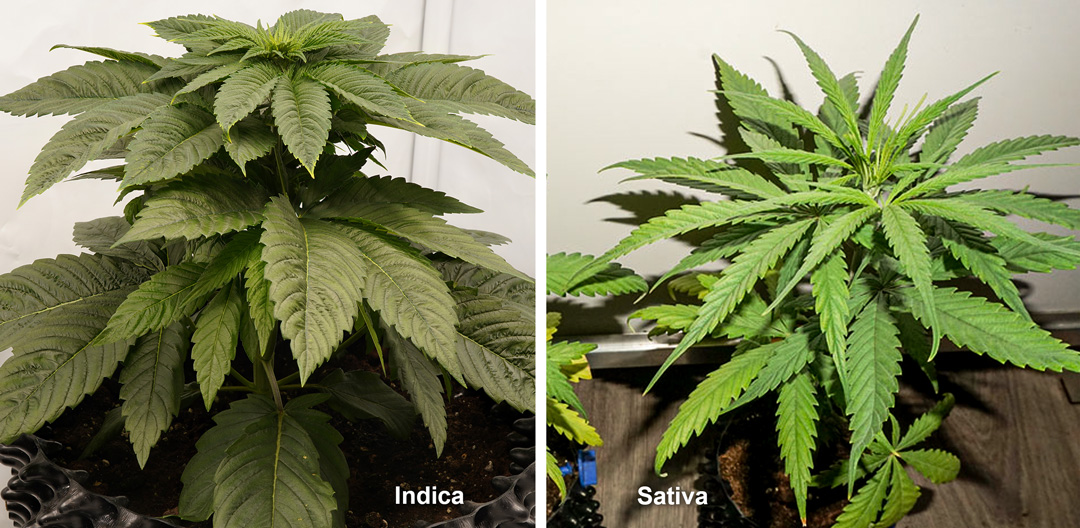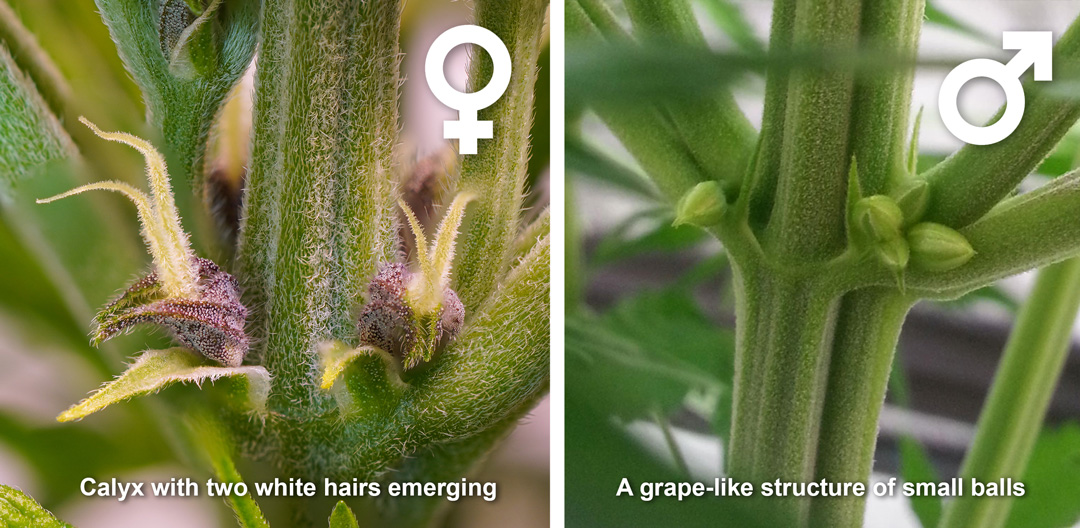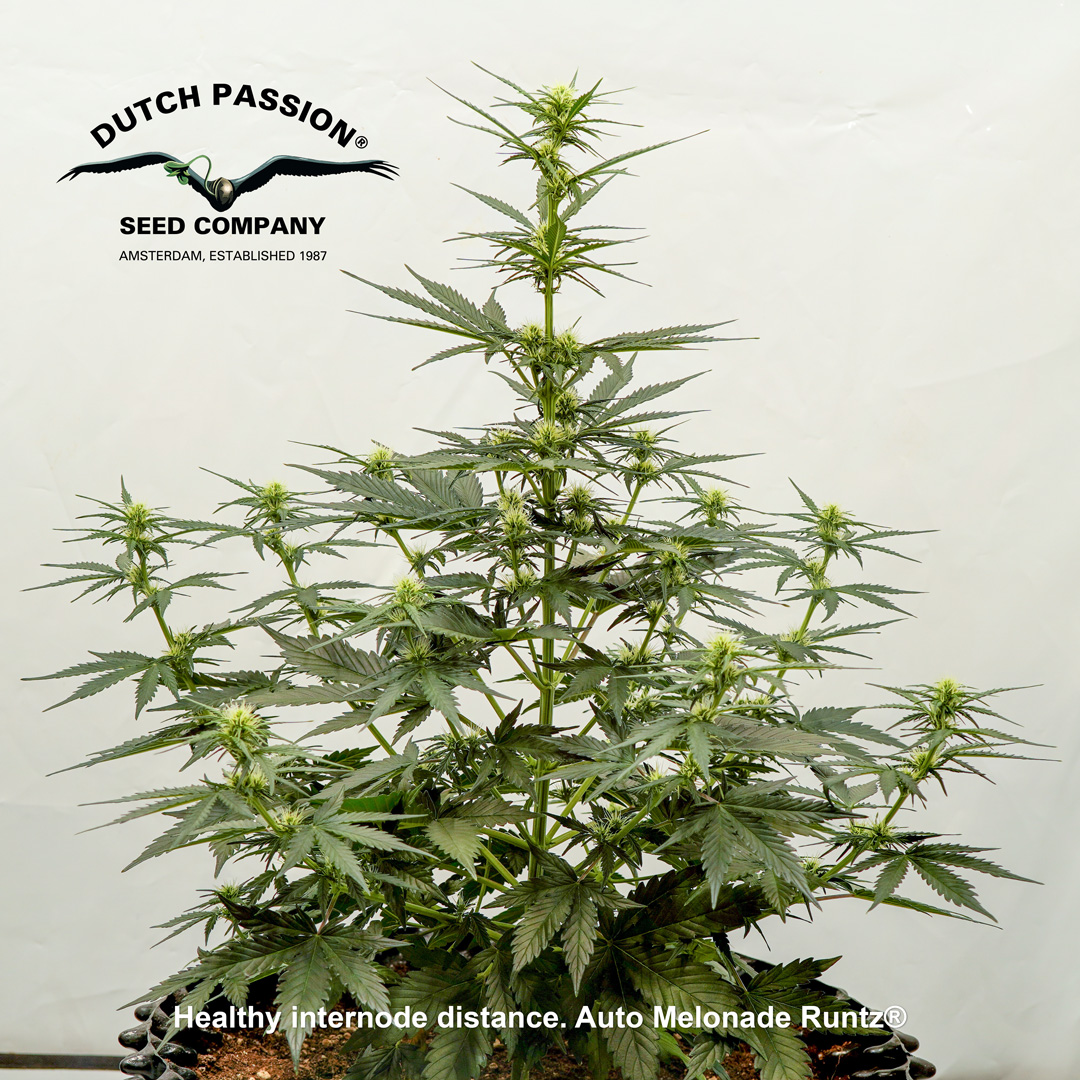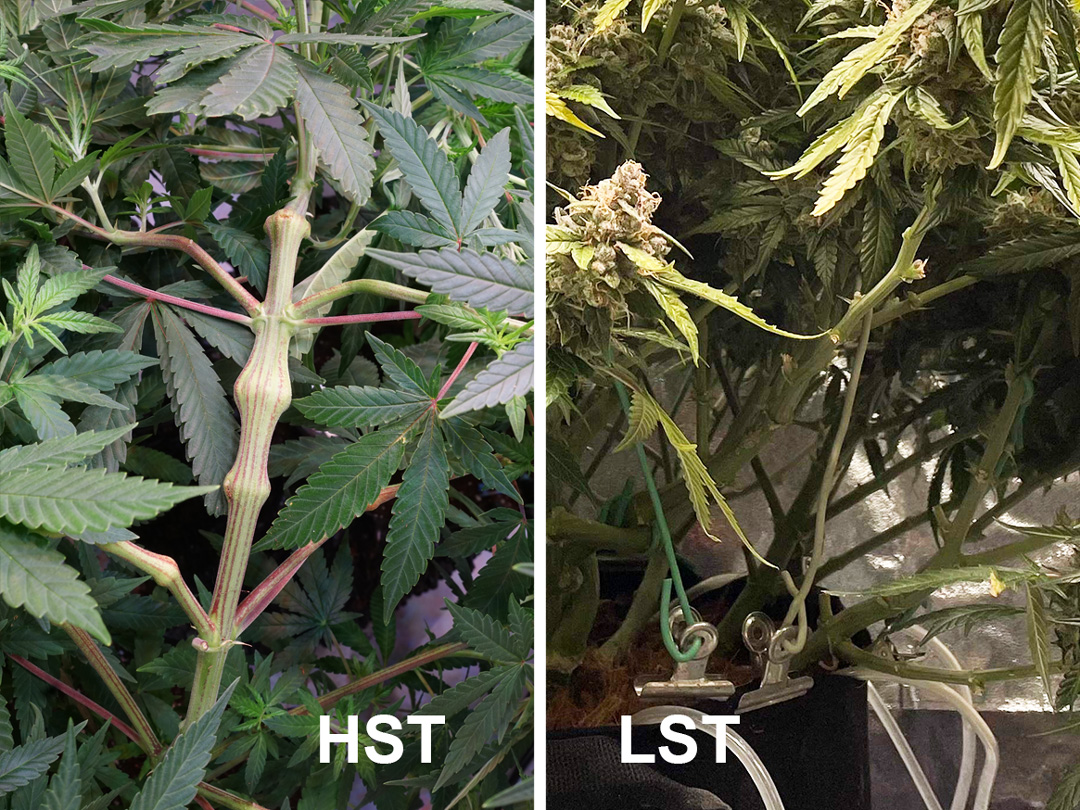Understanding cannabis nodes and internodes

Cannabis nodes are present on the stem of your cannabis plant as well as the branches. Nodes rarely receive much attention. But just a little knowledge of them goes a long way. Nodes can tell you plenty about the type and likely size of your cannabis plants as well as possible grow room/lighting issues. Understanding cannabis nodes can also help increase your chances of taking successful cuttings.
What are nodes and internodes of cannabis plants?
.jpg)
Cannabis nodes are the points on the main stem where a side branch emerges. The sections of plant between each node are known as internodes. As the plant grows, more nodes and branches form. The branches can go on to form numerous nodes and additional side branches. Some common terms used by growers include internodal distance and internode stretch.
Plants grown from sativa cannabis seeds may show greater internodal distance/stretch than those grown from indica cannabis seeds. Plants grown from either seed type will show greatest internodal stretch during the early cannabis flowering phase as plant hormones prepare the plant for bloom.
How many nodes should a cannabis plant have before flowering?
The answer depends on a few factors including the size of your grow tent/room, the specific genetics in your cannabis seeds and the time available for your grow.
• If you are growing autoflower cannabis seeds, then the plant will start to bloom automatically. Usually around 4-5 weeks after autoflower seed germination.
• If growing photoperiod feminised cannabis seeds you have complete control of your plants and the timing of bloom. If growing using the SCROG method, the question around the number of nodes is largely irrelevant. Experienced SCROG growers will simply wait until their screen is around 75% full and then initiate bloom by switching to a 12/12 cannabis light cycle.
• When growing photoperiod feminised seeds indoors, many growers start bloom after around 5-6 weeks of vegetative growth. At this point, dependent on the genetics and growing conditions you might have a main stem with around 5-12 nodes on it. Though the actual height will vary according to the strain and the environmental conditions.
• Those growing outdoor cannabis seeds will see a wide range of cannabis nodes on their plants at bloom, dependent on numerous factors. These include latitude, local weather, strain type and whether (or not) the seedlings were given some indoor growth before planting outdoors. Outdoor strains bloom as they sense day length shorten, often around August in the northern hemisphere (February in southern hemisphere).
The significance of cannabis nodes and internodes
Understanding and interpreting cannabis nodes and internodes can yield valuable information which can be used to great advantage by the experienced grower:
Indication of the sativa/indica influence in your plant

Indica plants with their typical limited internode stretch & short internodal distances, are easy to identify to those with even a basic experience monitoring internodes. Likewise, a super-stretchy Sativa is also easy to identify in the grow room. Sometimes hybrid cannabis seeds can have individual phenotypes that may lean more towards either the indica or sativa side. Identifying these individuals allows the grower the opportunity to modify their grow plans accordingly.
Useful information on bud development, density and bloom duration
Being able to interpret the subtle signs indicating the degree of indica/sativa influence in your particular plant can better prepare you for the type of bud development you can expect later in the grow. Knowing that your plant phenotype is e.g. expressing more sativa-like characteristics than expected may infer slightly less dense buds and possibly few extra days for bloom to complete.
Can help you prepare possible different grow techniques
All reputable cannabis seed banks should use back-crossing breeding techniques to stabilise the genetics as far as reasonably possible. But sometimes genetics can do the unexpected, such as a supposedly indica-leaning hybrid producing a strongly sativa-leaning phenotype.
With even a little experience and understanding of cannabis nodes/internodes, you can identify unexpected growth traits early and prepare. Those with restricted vertical growth space available in their grow room may wish to top a plant that is looking too stretchy. This involves removal of the main growth tip, forcing the plant into a shorter, bushier structure with more lateral growth and less vertical growth.
| Related: |
| Topping cannabis. When to do it, how and why |
Another option for unexpected stretch is to lay down a screen and grow with the SCROG method. Conversely, if the internode distance is shorter than expected in veg & more indica-like, the grower may opt for a few more weeks of vegetative growth in order to better fill their grow space and produce heavier yields.
Determining the sex of your cannabis plants

After a month or so of vegetative cannabis growth you may see pre-flowers at the cannabis nodes. With female plants you will see a calyx with two white hairs emerging. Male plants show a grape-like structure of small balls. Hermaphrodite cannabis plants (‘hermies’) show both male and female parts and are often removed from the grow room for fear of pollinating other plants. Those that are patient can often save their hermie plant by carefully monitoring and removing male pre-flowers - assuming the hermie outbreak is limited and manageable.
Internode distance may indicate issues with lighting or environment
Sometimes excessive internode stretch can be indicative of other environmental issues, such as low light levels or extreme temperature. If light levels are too low the plants may ‘stretch’ upwards in an attempt to reach higher light intensities. This can cause the plants to be too weak, and prone to later collapse.
These days, most serious growers use quality LED grow lights which should come with clear guidelines about recommended hanging heights & power settings for various stages of growth.
Plants exposed to cold nighttime temperatures and hot (30ºC+/86F+) daytime temperatures may also see excessive and unwanted stretch.
Cannabis nodes are useful to understand when taking clones or cuttings
If you carefully & cleanly take a cutting just below a node, you can create clones that have genetics identical to the parent plant. Expert growers and breeders routinely take cuttings of the best genetics that are simply too precious or special to lose.
Cannabis nodes contain meristematic tissue. This can actively divide and develop into cannabis roots. Hormone rooting powder (widely available in garden shops) is often used to maximise success. When taking cuttings remember to water/moisten the soil first and only then put the hormone rooting powder-treated cutting into the moist soil (or grow medium).
Watering a cutting which has been freshly treated with hormone rooting powder simply washes the rooting powder away. For that reason, moisten the soil/grow-medium first and insert the rooting powder treated cutting afterwards.
Identifying healthy cannabis nodes

If excessive internode stretching is causing issues (or is soon expected to) then there are an array of cannabis low stress training (LST) & high stress training (HST) techniques available to successfully manage the extra plant growth and allow you to bring in a quality crop.
Healthy cannabis nodes are one of the indications of a healthy plant with good vigour and vitality. Here are a few node-related items to consider.
Spacing of internodes: Tightly packed nodes with little internode distance may suggest excessive light intensity, or nutrient/temperature issues. Widely spaced cannabis nodes may imply low light levels or other nutrient/environmental concerns. After a grow or three you will be familiar with healthy-looking well-spaced nodes. Of course, the experienced grower should always look at other indicators such as leaf health, environmental parameters (temperature, humidity, air flow measurements etc) when trying to diagnose a plant issue.
Nodes are the same on autoflowers or photoperiod plants: Whether you grow autoflower seeds or photoperiod feminised seeds, the cannabis nodes and their function remain the same.
Plant health near the cannabis nodes: Nodes typically enjoy a glossy vibrant green appearance; nearby leaves should have the normal healthy green look. If you do see any damaged, fading/yellowing leaves at/near the nodes it may be an indication of issues elsewhere which need your attention.
Rampant side growth: Healthy nodes and vigorous genetics often combine to produce strong side (‘axillary’) growth which can sometimes allow extravagant side branching - leading to branch-bending yields. One of the evolutionary benefits to branching at cannabis nodes is to allow new parts of the plant to grow & reach light, ensuring the largest possible plant.
Healthy buds, healthy cannabis nodes: In the cannabis bloom phase, healthy nodes and dense sticky buds often go hand-in-hand. For premium potency harvests grow the best cannabis seeds and keep your plants in the nutrient and optical sweet spot from weed seed to harvest.
How to count nodes on a cannabis plant
The specific number of nodes isn’t necessarily that important. What matters is growing the genetics in the best possible way to produce an optimised harvest. But if you are planning to top or FIM your plant it’s advisable to wait until the plant is sufficiently developed, normally around a month old
How many nodes before topping cannabis?
Most growers would advise to wait until your plants has a minimum of 4 cannabis nodes. Many prefer to wait until their plant has 6 nodes before topping their plants. Some prized mother plants used by professional growers resemble large bushes and can produce hundreds of cuttings at a time.
Cannabis nodes FAQ

Experienced growers understand the basics of cannabis nodes as well as the information nodes can offer to the observant cultivator. These critical nodes are a vital part of the plant and its branch development. Understand them and you may pick up early clues about your future plant development and make informed decisions about possible use of LST/HST training or SCROG. You may also be able to use your knowledge to take cuttings from elite plants grown from feminised seed.
Do cannabis buds grow from nodes?
Yes, you will often be able to pluck a bud from a node. Occasionally you may also see a rogue bud emerging on a leaf!
Do plant nodes turn into roots?
Normally not, the node typically allows the plant to branch and increase its future photosynthetic canopy capacity as a result. But the special meristematic cells present in the nodes can divide and grow into roots under the right conditions.
Cannabis growers use this feature to their advantage when taking cuttings. In nature, the meristematic cells present in node tissue means that accidentally removed (e.g. storm damaged) branches can grow roots and survive if they land in the right place and conditions are right. Sometimes a low-lying branch resting in soil can also grow roots for the same reasons.
How many nodes should a cutting have?
In general, larger cuttings tend to be preferred since they have the greatest chances of surviving. But many home growers lack the time required to produce these and will often take cuttings with just one or two nodes on them.
Can you propagate clones without leaves?
In specialist tissue lab conditions cannabis plants can be grown from just a few plant cells with no need for any leaf material/structure. However, the rest of us should ensure that a cutting has some leaf material even if it has been trimmed to reduce transpiration demands until a root system has evolved. The presence of a small amount of leaf material allows the cutting to photosynthesise and provides the biochemical energy required as the new root system forms and the cutting begins its new journey into adulthood.



























